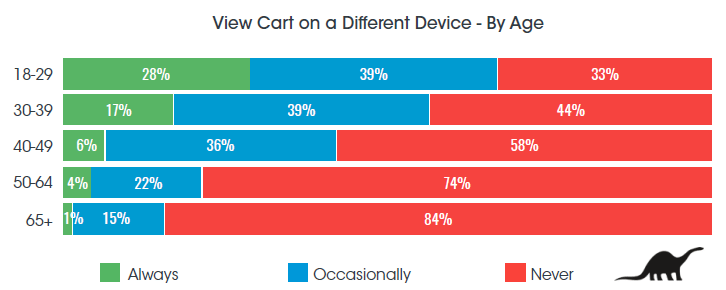All roads on the path to purchase intersect in the shopping cart, the chaotic hub of e-commerce activity that often represents the moment when the consumer starts the checkout process and the retailer is about to get the sale. But as any commerce marketer knows, it’s not always a happy ending. The rate at which items are abandoned in carts continues to rise. Current studies show over 70% of carts are left behind.
Does this mean that shoppers are actually abandoning their carts with no plans to return? Not necessarily. Many marketers have developed cart abandonment strategies in hopes of getting shoppers to return to the site and buy. While these initiatives are almost always sales boosters, it may be time to expand the way retailers market to shoppers who leave items in the cart.
Bronto asked online shoppers to share why they leave items in the shopping cart and what they expect to happen after they leave items behind. The results are included in the three-part Consumers Tell All series.
Overall, the results show that consumers use the cart not only as a first step to checkout, but also as a shopping tool that helps them transition the shopping experience between devices and across channels. The study reveals that 40% of online shoppers will leave items in the shopping cart with plans to view the cart on a different device at a later time. One in 10 online shoppers will view the cart on multiple devices every time they shop.
Younger shoppers embrace this strategy more than their older counterparts. Two out of three shoppers between the ages of 18-29 will view items left in a cart on a different device when shopping, and 28% will have a multi-device cart experience every time they shop!
This data should signal retailers that it’s time to expand shopping cart strategies beyond those of abandonment and recovery. Many cart reminder messages today speak to the shopper as if they have decided not to buy. The messages often come close to begging the shopper to come back and rely on urgency (“Items in your cart will be removed in 5 days”) or an incentive to complete the order (“Free shipping if you complete your order today!”).
With so many shoppers using the cart as a way to momentarily pause the shopping experience, retailers must refocus the tone and content of these messages to help the shopper reconnect to the site when they are ready to continue shopping.
Here are a few ways to reach the shopper who plans to view their cart later on a different device:
Maximize the Mobile Cart: In many cases, optimizing the cart on a mobile device means removing some of the features and functionality seen on the desktop version. But be sure to include tools that allow shoppers to change quantities, adjust sizes, select a color, choose a shipping option or enter a promo code so these shoppers are able to further refine their purchases when the cart is viewed across multiple devices.
Focus on Service, Not Selling: Rather than relying on urgency or a discount, help the shopper reconnect to their cart and give them ways to explore similar items on your site or in a store. Let them know the items will be there when they are ready to return, and reinforce how easy it is to shop on your mobile site. Offer ways to reach out to your customer service reps or store locations with questions.
Feature the Device and Channel Connections: Include store location links and information for the nearest (or preferred) store information, utilizing a phone’s native features. Addresses should connect to the device’s GPS app rather than a clunky and often mobile-unfriendly web page. Ensure phone numbers use common formatting so they allow for tap-to-dial. Give the shopper information about which offers are available in-store, online or both so they understand how they can get the best deal.
Shoppers may be leaving items in the cart, but they are not always abandoning them. In fact, this behavior could indicate an even stronger purchase intent – saving items knowing they will return to the site later to continue shopping. Understanding these behaviors and planning for them will help you create the seamless experience shoppers crave as they moves between channels.
Jim Davidson is the head of research for Bronto Software


